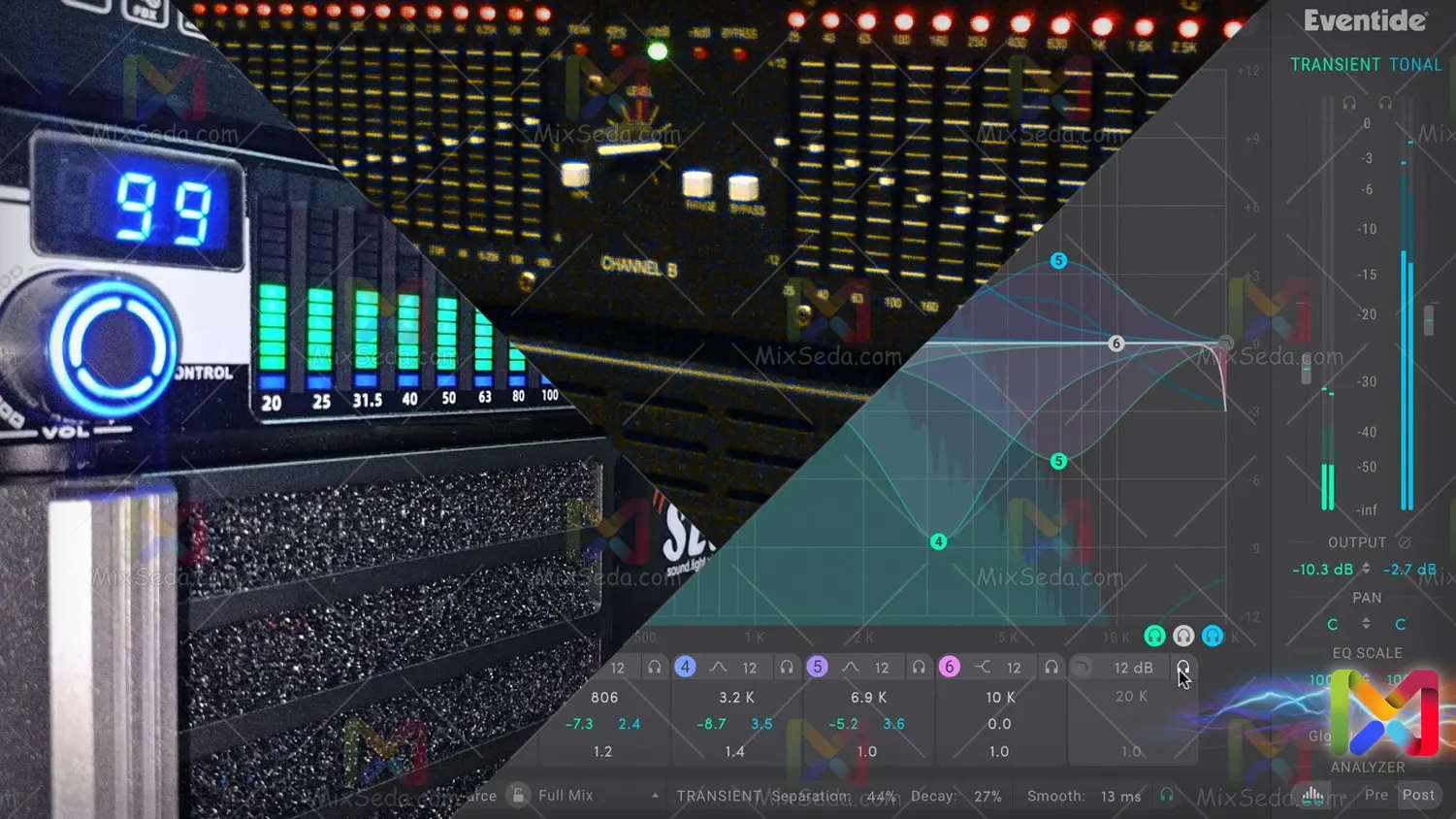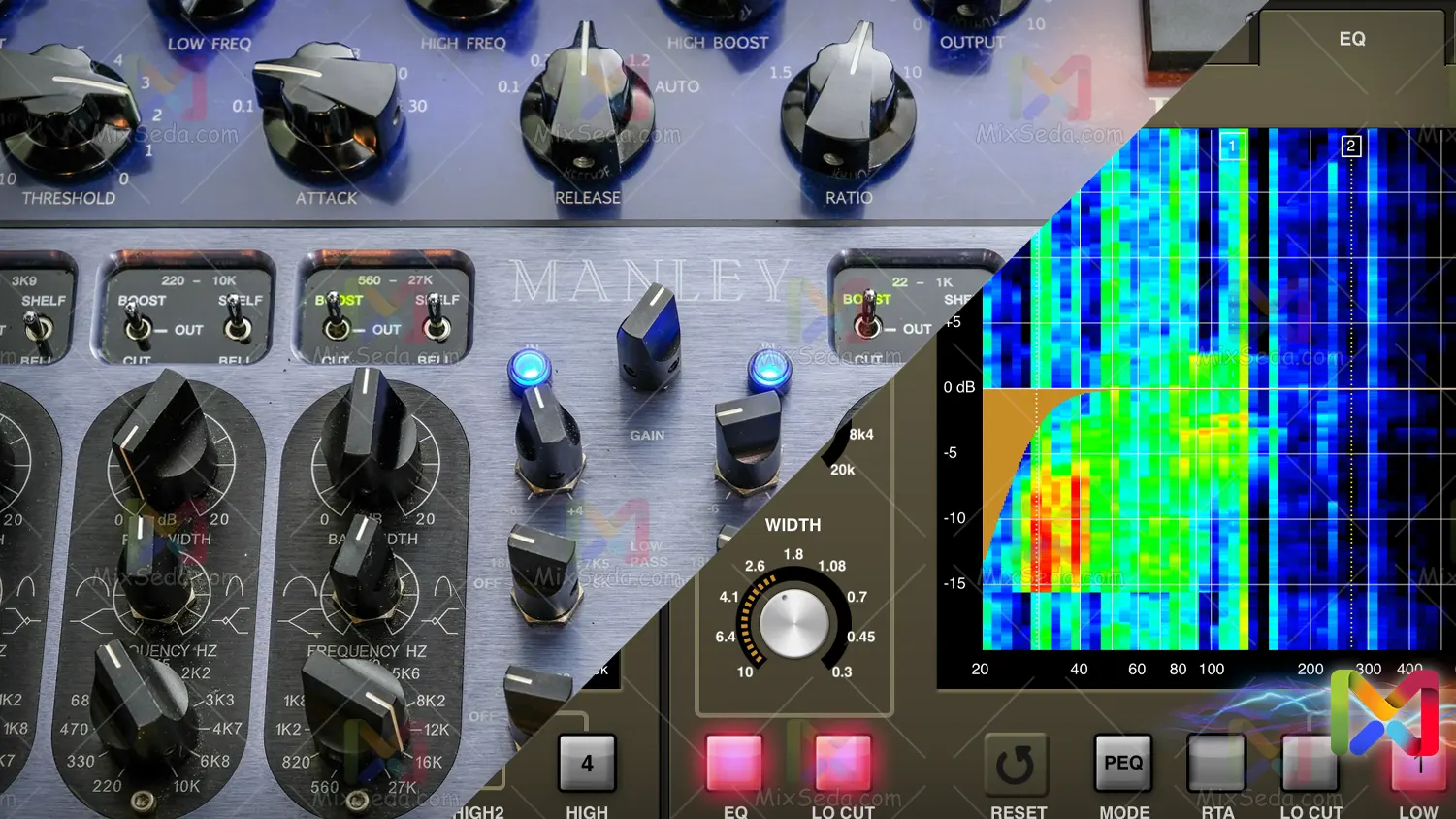
Check the equalizers in th e mixer
In the mixer channel, there is an option to decrease or increase a certain amount of frequency bandwidth, which is called a dynamic equalizer.
Cheap and small mixers only have bass and treble. Some other mixers have three frequency bands: low (medium), medium (medium), and high (high).
In the more advanced types, they maneuver on the middle band, they can have four frequency bands, the middle range is divided into two parts: medium and medium-low.
However, many mixers use a parametric equalizer in the mid-range.
Many mixers have a graphic equalizer with 5 channels, usually up to 10 frequency bands, output and master.
This equalizer to control the tone of the sound in the final stage, which affects the sound of all channels.
Analog and digital equalization
In some digital mixers, this equalizer is applied digitally, which is not limited to the number of bands.

Outside the mixers, there are equalizer devices that adjust the audio signals to the desired equalizer effect.
Some of these devices work digital and others work analog.
Analog equalizers are generally more popular than digital equalizers for several reasons:
First, the price of analog equalizers is lower.
Digital equalizers have a delay compared to analog equalizers.
It is easier and faster to use analog equalizers for live work.
In Dynacord mixers, 3 to 4 volumes of dynamic equalization are designed for each line.
And for the master output, there is an analog equalizer that has 9 to 15 bands (equalizer-related volume feeders) depending on the device model.
This analog equalizer is usually found to the right of analog mixers.
